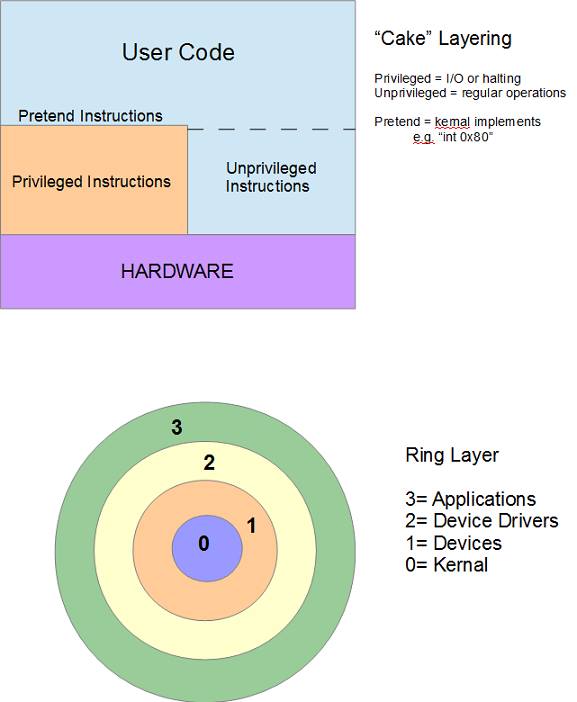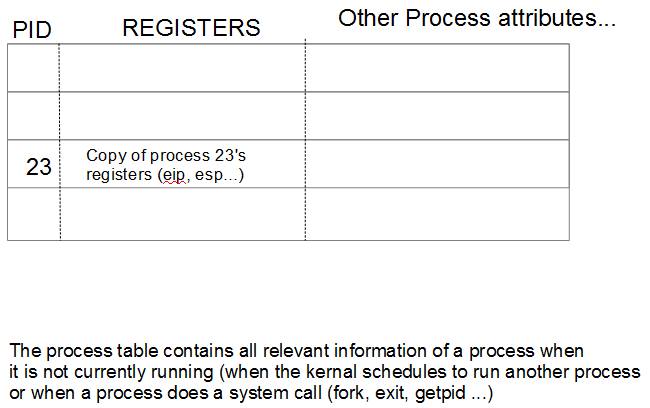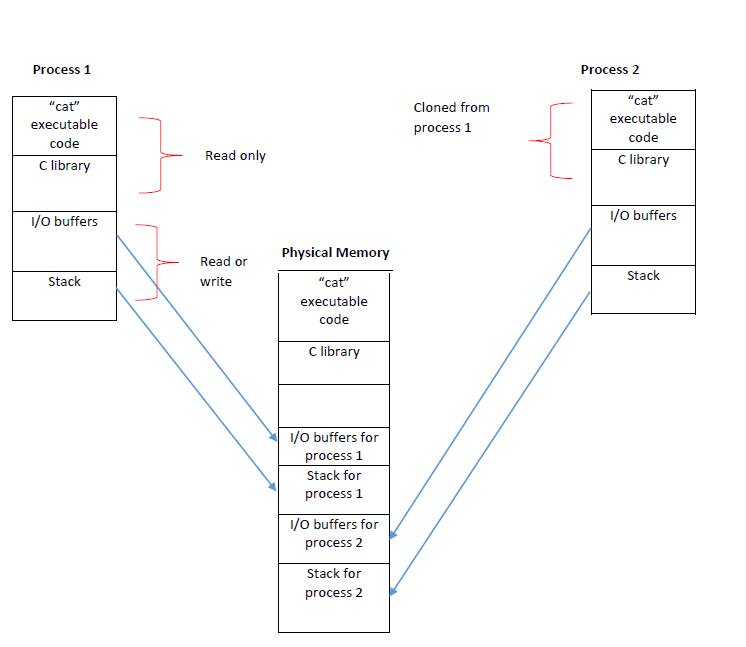Scribe notes by: Joey Gomez-Benito, Patrick Killian Jackson, and Justin Jordan
OS Organization
Goals of an OS:
-
ease of interface/use/simplicity
-
reliability/robustness
-
efficiency
-
mutability/flexibility
-
security
3 fundamental abstractions for systems
-
Memory API
Issues:
-
total size of memory
-
word size
-
speed (throughput/latency)
-
volatility (how permanent is the memory?)
-
linear vs associative addressing
-
coherence (atomic read/write)
-
Interpreters API
high level:
interpreter f, program p
v = f(p) where v is the answer
ip = instruction pointer
ep = environment pointer
need:
-
efficiency (hardware support needed) (virtualizable processor)
-
interrupts
-
they should be "safe"
-
requires hardware support (virtualizable processor)
-
Link API
send (linkname, bufferofdata)
receive (linkname, bufferofdata)
e.g., I/O bus
examples of message passing.
Upsides:
-
+Network is abstracted away
-
+kernel can be anywhere
Downsides:
-
-Everything must be serialized
-
-Tough on Pointers
-
-Performance slowdown
if students were asked to write an OS in CS 32, they would write is as an Object Oriented Program.
they would implement it with classes for I/O bus, memory, interpreter...
(the road not taken)
CPU
||
-------------||-------------||------------------------ bus
RAM I/O Controllers
(resources below are decreasing in performance order)
Core of the CPU: (User code access actual ALU + registers at full speed)
ALU;
Registers;
Cache; (Shouldn't make the program run any different besides speed)
RAM:
primary RAM <--- want full-speed access to some physical memory
I/O <--- typically no access in interpreted program
One Other Resource:
time (operating system has to manage system resources)
Method of Implementing Interpreters:
Layering

Building New Machines on top of old ones.
OS + virtualizable processor
let you support a process
process = program running in isolation(on a virtual interpreter)
To create a process in linux:
pid_t fork(void); //pid_t - process ID. It's a 32 bit int
To destroy a process:
you can't, processes destroy themselves
noreturn void exit(int)
the argument is the exit status
pid_t p = fork();
1 physical CPU
>1 Processes
process table:
indexed by process_IDs

suppose a process does a read(fd, buf, 1000);
save the process's registers and resume some other process
the register values of a running process are junk because they show what the instructions were at a previous point
Accessing Memory
each process has its own view of memory
Process table is a table indexing processes by process_ID
each process will have its own view of memory

Things that are cloned are mapped to the same part of physical memory
The _exit() system call
pid_t p = fork();
_exit(2); <--- doesn't flush the output buffers
true.c
int main(void)
{
return 0;
}
cat executable
--------------
glue === exit(main()) to put exit status in process table
--------------
code from cats
main program
-------------
The waitpid() system call
pid_t waitpid(pid_t, int*, int);
pid_t: pid of waited-for process
int *: location to store its status
int: flags(0)
name for an exited process: zombie
zombies are still in the process table.
To reclaim the entry in the process table you must call waitpid() on
the process that is in a zombie state. This will give its exit status and put
the process into an empty state.
process table
---------------
---------------
---------------
---------------
56 *zombie* | exit status| <--- exited process
---------------
---------------
---------------
---------------
while(fork()==0) //each iteration you get a parent to fork into a child
continue;
this will load up the process table to 100%;
called a fork bomb;
most systems have a limit on the amount of processes
Limited Isolation - the pipe() system call
Sometimes processes need ways to communicate with each other:
solution = a pipe
pipe = bounded buffer that sits inside the kernel that acts like a queue of bytes
int pipe(int fd[2]);
each entry in the fd array correspond to file descriptors:
1 for reading the pipe
1 for writing into the pipe
Pipe issues:
Reading an empty pipe = hanging
Writing to an empty pipe = hanging



